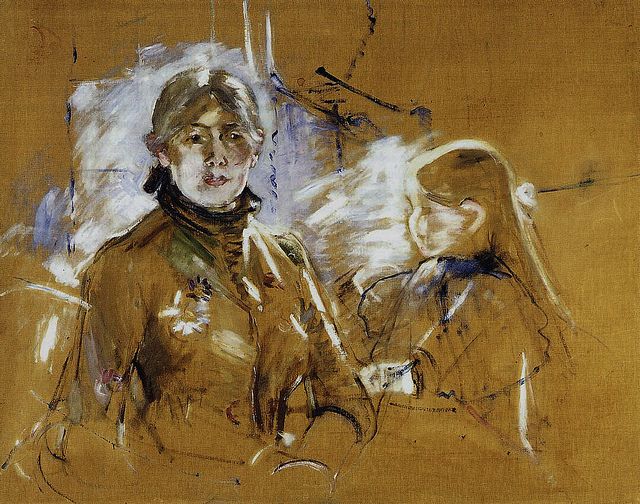

Berthe Morisat Taining Period Artwork Backend As A Service Callaway Golf Marco Dawson Download Lagu Mp3 Online Husqvarna 353 Repair Manual Ida Pro Mod Libgame.so Ps3 1.4.1 Bios Download Pypdf2 Rename Pages Banished Fishing Dock Radius Download Driver Jinka1351 Win 8 Canon Selphy Pvc Card. The Impressionists were mostly men with a few notable exceptions, including Berthe Morisot. While Morisot's work includes many of the hallmarks of Impressionism, such as her loose, impressionistic brushwork, the subject matter of her paintings often reflects the social constraints of her gender. Berthe Morisot was a French painter and printmaker involved in the Impressionist movement. View Berthe Morisot’s 738 artworks on artnet. Find an in-depth biography, exhibitions, original artworks for sale, the latest news, and sold auction prices. See available works on paper, paintings, and prints and multiples for sale and learn about the. The Estate of Berthe Morisot and their presence hold all necessary copyrights and licences for all of his paintings and other works. All prints, paintings and photos included in www.Berthe-Morisot.com are provided as an affiliate to Art.com who hold necessary permissions.
Berthe Morisot was a renowned French Impressionist artist, widely celebrated for her landscapes, portraits and remarkably impressive still lives and domestic scenes.

Berthe Morisot was born on January 14, 1841, in Bourges, France. Her grandfather, Jean-Honore Fragonard, was a renowned and notable Rococo painter, while her father was an influential and high-ranking government official. Artistic education and training was encouraged in her household, and from a very young age, Berthe and her sister Edma began her training in arts and painting. The conventional society of France did not encourage the participation of women in visual arts and hence, the young girls were not allowed to study at the official art institutions. Despite that, their talent and skill was appreciated and widely discussed in the art circles and influential societies of France.

In the late 1850s, Berthe and Edma travelled to Paris and began their training under the tutelage of Joseph Guichard, they began studying and copying the works of the Old Masters at the Louvre Museum. Later, they studied under notable and influential landscape artist Jean-Baptiste Camille Corot, who taught them the details and expertise of painting outdoor scenes. Berthe Morisot began working with Corot, and in 1864, she showcased her first exhibition at the prestigious and influential state organized art show, the Salon. The show was a fabulous success and Berthe earned a regular spot at the show for the next ten years.
In 1868, Berthe was introduced to Édouard Manet, and the two formed a mutual connection and a lifelong friendship. Edouard had a profound influence on Berthe’s work, and she gave up the styles and practices that she had learnt with Corot and adopted Manet’s experimental, unconventional and modernistic style that encouraged her freedom of expression. During the same period, she also became friends with several influential Impressionists including Edgar Degas and Frédéric Bazille, whose work had an impact on her artistic approach.
In 1874, Berthe refused to showcase her work at the Salon, and instead, she collaborated with several notable Impressionists, including Edgar Degas, Camille Pissarro, Pierre-Auguste Renoir, Claude Monet and Alfred Sisley among others, and showcased her work at the first independent show of Impressionists paintings. Among the paintings that Berthe showcased at the show included, The Harbour at Cherbourg, Reading, Hide and Seek and The Cradle.
The same year, she married Manet’s brother, Eugene Manet, and this union provided her social standing and financial security, and allowed her to break free of all social and financial constraints and experiment the depths of her artistic expressions and talent. She began dedicating time to her craft and became a regular participant at the Impressionists exhibitions each year. However, she was unable to take part in the exhibition in 1877, as she was expected her first child, a daughter.
Berthe Morisot Impressionist Paintings
Berthe Morisot continued to get acclaim and fame for her artistic talents and expressions, however her paintings did not meet much commercial success during her life. However, her work had several influential patrons and her paintings would regularly outsell the works of several notable Impressionists such as Renoir, Sisley and Monet.
Her husband passed away in 1892, Berthe kept herself steady and strong during her difficult and grievous time, and devoted her time to her artistic passions and painted her sorrow on to the canvas. The same year, she organised her first solo exhibition that proved to be an immense success. In 1894, the French government purchased her famous oil painting, Young Woman in a Ball Gown.
Berthe Morisot Works
In 1895, at the age of 54, Berthe Morisot became infected with a severe and terminal case of pneumonia and after a painful suffrage, she passed away on March 2, 1895. Her work is celebrated for its fineness and its startling attention to detail, she was particularly famous for her landscapes, still lives, portraits and domestic scenes. Some of her widely acclaimed and celebrated works include, Woman at Her Toilette, The Cherry Tree and Girl with a Greyhound.